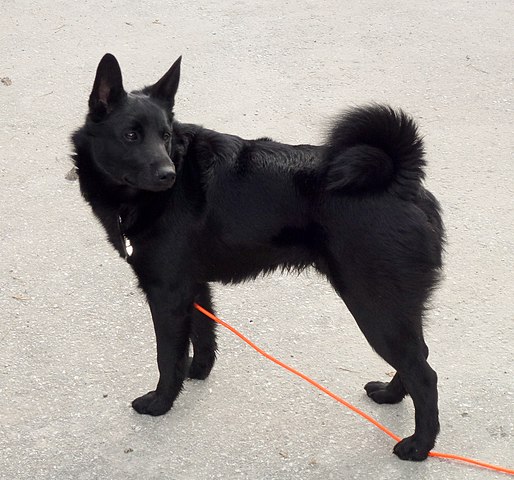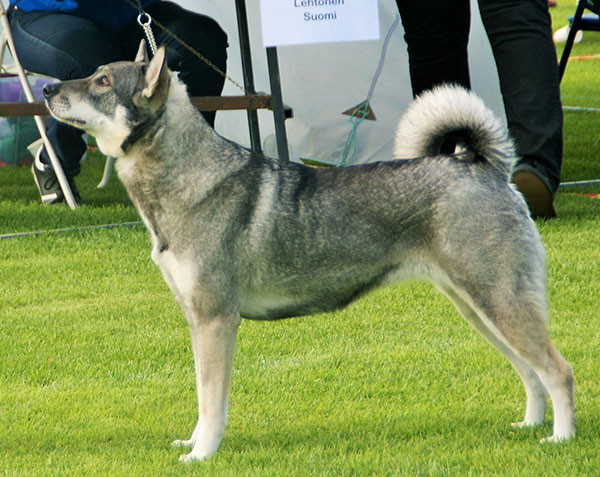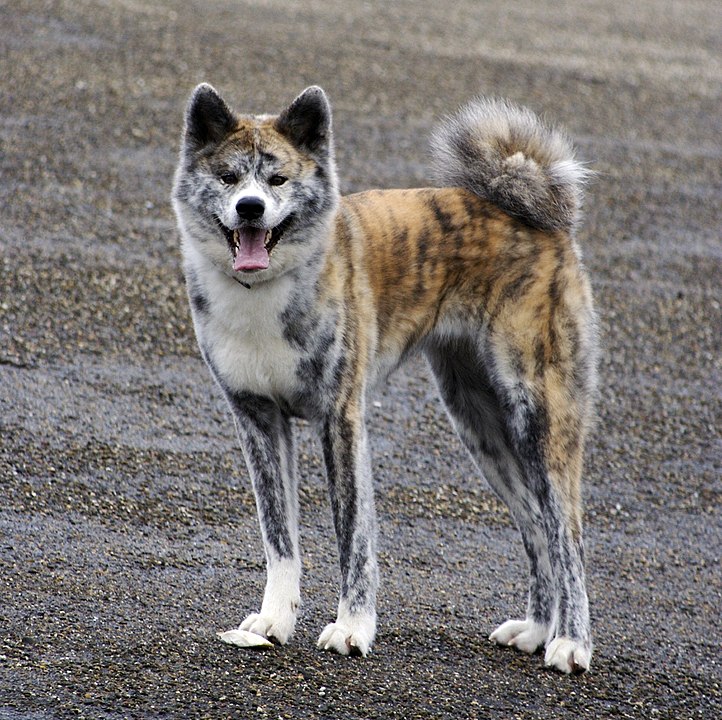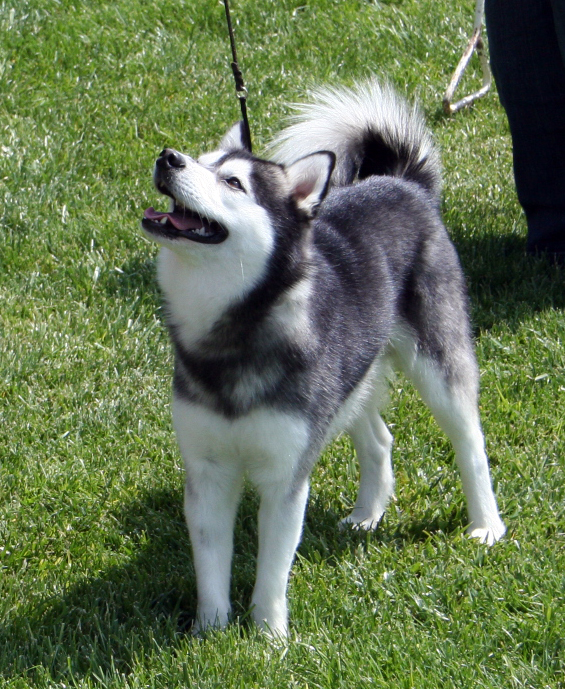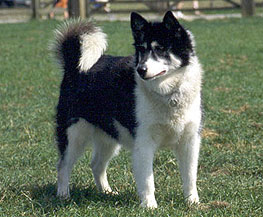The Thai Bangkaew dog is not recognized in the United States, but he is recognized in Thailand, the Asian Kennel Union, and the FCI. This spitz breed is said to be the product of a “black and white” dog owned by a Buddhist abbot and a now-extinct wild dog, eventually built into a new breed in the early 1900’s. They were believed to have originated in the village of Bangkaew – hence the name.
The TBD is a loyal spitz that can become very attached to and protective of his owner. Extremely alert, he is wary of strangers and is known for his watchdog and guard dog abilities in Thailand. He has also been used for hunting and as a devoted family companion – he is not a one-man dog and is affectionate to all members of the family. This isn’t a loud dog unless he needs to be – if someone is encroaching on the property for example. This is a confident, no-nonsense breed with a fearless and occasionally dominant temperament – not for the novice dog owner. Although a great companion in the right hands, he is territorial and does require owners with dog experience. He shouldn’t be outright aggressive for no reason however this requires knowledge, early socialization and training.
Bangkaews are intelligent and can be obedient when trained. Some have even been used by the Thai police and customs services because of their serious, hardworking aptitudes and versatile nature. That said, there is a stubborn streak stemming from their independent characters and they do best when training lessons are broken up into short, reward-based sessions. Consistency is key, as is patience. Although they can be good workers, they aren’t always the easiest to train initially. They also tend to get bored easily. They require plenty of respect, but also need owners who won’t put up with bad, pushy behavior. A confident owner is absolutely required as this breed will strive to control the household if he feels there isn’t a strong leader in the midst.
The Thai Bangkaew, in general, tends to love the water and enjoy swimming. The coat is even water repellent! They are athletic and sturdy, and able to take any sort of exercise thrown at them. They do need plenty of daily workouts (and lots of it) to stay healthy and temperamentally sound. Likewise they also need mental stimulation in the form of training, games and even dog sports such as agility. Finally, routine vet care (just like any other dog) should also be provided. Most TBDs are very healthy although some do suffer from eye disease, ear infections or hip dysplasia. Average lifespan is about 11-12 years.
Bangkaew Dogs are medium sized, squarely-built dogs with long legs. Ears are small and pricked on top of a wedge-shaped head. The coat is thick and double-coated, medium length overall with a visible ruff around the neck and shoulders. Color is always white with patches of another color – either red, tan, lemon, fawn, gray or black. Occasionally the coat has black tips giving a sable pattern over the colored parts of the dog. The tail is carried moderately over the back. Coat care is easy as long as routine brushing is kept up with. The thick coat does need regular attention to keep mats from forming but there is no special trimming required.
The Thai Bangkaew Dog tends not to get along well with other dogs but can live with other large pets if socialized early. He is playful but prefers to play with humans as dog-dog aggression is unfortunately common in the breed. Smaller pets are risky because of his prey drive. He can be trustworthy around children although older, thoughtful kids are a better match for this breed. Supervision is required around younger children, and the dog must be raised with them from puppy-hood.
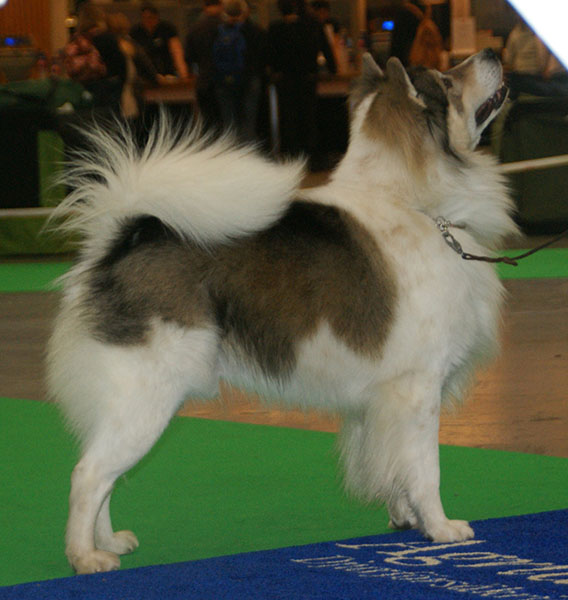
Photo By Canarian

